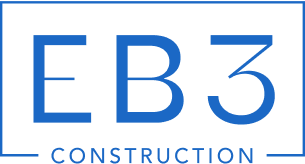Construction companies face financial challenges that would sink most other industries. When you’re managing projects worth millions of dollars, tracking costs across multiple sites, and dealing with payment schedules that span months or years, standard bookkeeping methods quickly fall apart.
Accounting in construction addresses these realities with specialized systems designed for our industry’s unique demands. This guide covers the essential methods contractors need to maintain profitability, meet compliance requirements, and make informed decisions that protect their bottom line.
How Is Accounting In Construction Different From Regular Accounting?

Construction accounting operates fundamentally differently from general business accounting due to the unique demands of project-based work. While traditional accounting focuses on ongoing operations and standardized products, we manage complex, custom projects that span months or years. The differences create specific challenges that require specialized approaches to track costs, manage cash flow, and ensure profitability.
Project-Centric Financial Management
Each construction job functions as its own profit center with distinct revenue streams, cost structures, and timelines. We track costs and revenue by project, phase, and cost code rather than relying solely on general ledger entries. This granular approach allows us to monitor individual job performance and make real-time adjustments when costs drift from estimates.
Traditional accounting aggregates financial data at the company level. Construction accounting requires us to maintain detailed records for every project simultaneously. When we build a commercial office complex, every material delivery, labor hour, and equipment rental gets allocated to specific cost codes within that job. This project-centric approach enables accurate job costing and helps identify which types of work generate the highest margins.
Decentralized Production Challenges
Construction work happens across multiple job sites with crews and equipment constantly moving between locations. This mobility creates accounting complexities that office-based businesses rarely encounter. We must track mobilization costs, location-specific wage rates, varying tax jurisdictions, and transportation logistics for each project.
When our crews work in different counties or states, we handle varying tax requirements, prevailing wage rates, and regulatory compliance standards. Equipment costs get allocated based on actual usage hours at specific sites. These decentralized operations require sophisticated tracking systems to capture costs accurately and ensure proper job costing allocation.
Long-Term Contract Complexities
Multi-period construction projects use payment schedules, retainage withholding, and progress billing that differ significantly from standard business transactions. We manage cash flow gaps between project expenses and client payments, often fronting material and labor costs weeks before receiving progress payments. Retainage provisions typically withhold 5-10% of payments until final project completion, creating additional cash flow management challenges.
These irregular payment patterns require careful forecasting and working capital management. Unlike businesses with predictable monthly revenue cycles, we must plan for extended periods between major cash inflows while maintaining continuous expense obligations across multiple active projects.
Cost Variability And Estimation Challenges
Labor and material costs fluctuate based on market conditions, geographic location, and project timing. Steel prices, fuel costs, and skilled labor availability can shift significantly during a project’s duration. We continuously monitor cost trends and adjust forecasts to maintain project profitability.
Accurate initial estimates require deep market knowledge and historical data analysis. When material costs increase unexpectedly, we must determine whether to absorb the increase or pursue change orders. This cost variability demands more frequent re-forecasting compared to businesses with stable input costs and standardized products.
Change Order Management
Scope changes occur frequently in construction projects due to design modifications, site conditions, or client requests. We must document each change order thoroughly and price it promptly to protect project margins. Change orders affect both project costs and timelines, requiring updates to budgets, schedules, and cash flow projections.
The change order process involves coordination between field teams, project management, and accounting to ensure proper documentation and billing. Unlike standard business transactions, change orders often require client approval before work proceeds, creating potential delays in both execution and payment collection.
Profitability Prediction Difficulties
Project profitability depends on numerous variables including weather delays, regulatory changes, subcontractor performance, and unforeseen site conditions. We monitor job costs continuously and compare actual performance against original estimates to identify potential overruns early. This ongoing analysis helps us make informed decisions about resource allocation and project management strategies.
Traditional businesses often have predictable profit margins based on established products and services. Construction projects involve custom solutions with unique risk profiles, making profitability forecasting more complex and requiring sophisticated job costing systems to track actual versus estimated performance.
Which Core Concepts And Methods Should Contractors Master?
The foundation of construction accounting rests on several essential concepts that directly impact project success and company profitability. We structure our approach around these key areas to ensure accurate financial tracking and informed decision-making throughout every phase of construction.
Job Costing
Job costing forms the backbone of construction financial management. We track labor hours, material costs, equipment expenses, overhead allocation, and specific activities by individual project to compare actual performance against original estimates. This granular approach allows us to identify cost overruns early, adjust resource allocation, and make data-driven decisions that protect project margins.
The system enables precise measurement of each project element through detailed cost codes. We categorize expenses by trade, phase, and resource type to understand where money flows and identify patterns that inform future bidding strategies. Accurate job costing requires disciplined data collection from the field, timely cost allocation, and regular variance analysis to maintain project profitability.
Revenue Recognition Methods
Selecting the appropriate revenue recognition method depends on contract characteristics, project duration, and regulatory requirements. Each method serves specific situations and carries distinct advantages and compliance obligations.
Cash basis accounting records revenue when payment arrives and expenses when bills are paid. This straightforward approach works well for smaller projects with short durations, but fails to reflect the economic reality of long-term construction contracts where work spans multiple accounting periods.
Accrual basis accounting recognizes revenue when earned and expenses when incurred, regardless of cash timing. This method provides a more accurate picture of project economics and financial performance over time, making it preferable for most construction companies with significant long-term contracts.
The Percentage of Completion method recognizes revenue and expenses as work progresses, typically using cost-to-cost calculations or physical completion percentages. We apply PCM when contracts span multiple periods and we can reliably estimate total costs and measure progress. This approach matches revenue recognition with actual work performed, providing stakeholders with real-time project profitability insights.
The Completed Contract Method defers all revenue and expense recognition until project completion. CCM suits smaller residential projects, shorter-duration contracts, and specific tax planning scenarios where deferring income recognition provides strategic advantages.
ASC 606 requires identifying distinct performance obligations within contracts and recognizing revenue as control transfers to customers. This standard often requires revenue recognition over time for construction projects, aligning closely with traditional percentage of completion principles while adding more detailed analysis of contract terms and customer control.
Retainage Management
Retainage represents funds withheld by customers to ensure satisfactory project completion, typically ranging from 5% to 10% of contract value. We record these withheld amounts in a separate retainage receivable account rather than standard accounts receivable, since collection depends on final project approval rather than standard payment terms.
Proper retainage tracking requires detailed documentation of contract terms, milestone completions, and final approval processes. We invoice retained amounts immediately upon achieving the specified completion criteria and customer acceptance. Effective retainage management significantly impacts cash flow, especially for companies with multiple concurrent projects where accumulated retainage can represent substantial working capital.
Specialized Billing Approaches
Construction billing methods align with contract structures and payment terms negotiated with customers. Fixed-price contracts use lump-sum billing based on project milestones or completion percentages, providing predictable payment schedules while transferring performance risk to contractors.
Time and materials billing charges customers based on actual hours worked plus material costs, often with predetermined markup rates. This approach works well for service work, change orders, and projects where scope definition remains uncertain.
Unit price contracts bill based on quantities of work completed at predetermined rates per unit. This method suits projects where total quantities are uncertain but unit costs can be accurately estimated, such as excavation or paving work.
Cost-plus billing reimburses actual project costs plus an agreed fee structure, providing transparency while requiring detailed cost documentation and approval processes. AIA progress billing uses standardized forms and schedule of values to document work completion and payment applications, facilitating consistent communication between contractors and customers throughout project duration.
How Should Construction Payroll Be Handled Across Jobs And Jurisdictions?

Construction payroll operates in a complex regulatory environment where teams work across multiple states, classifications, and contract types. We manage this complexity through specialized systems that handle prevailing wages, union agreements, multi-state tax obligations, and integrated job costing requirements.
Prevailing Wage And Certified Payroll Requirements
Public projects impose specific wage standards through federal and state regulations. The Davis-Bacon Act requires contractors on federally funded projects over $2,000 to pay prevailing wage rates determined by local market conditions and job classifications. These rates often exceed standard minimum wages and include fringe benefits like health insurance and pension contributions.
We submit certified payroll reports weekly using Form WH-347, documenting each worker’s name, classification, hours worked, rate of pay, gross earnings, deductions, and net wages paid. These reports verify compliance with prevailing wage laws and include a signed statement of compliance from authorized personnel. Missing or incorrect submissions can result in contract fund withholding and disqualification from future government projects.
The challenge intensifies when projects span multiple jurisdictions, each with distinct prevailing wage determinations. We track location-specific rates for identical job classifications, applying the highest applicable rate whether based on federal, state, or local requirements. Modern payroll systems automate these calculations and generate compliant reports, reducing manual errors and ensuring timely submissions.
Union Payroll And Multi-Local Reporting
Union workers operate under collective bargaining agreements that dictate wage scales, benefit contributions, and working conditions. We track multiple rates within single projects when different trades have separate agreements. Electricians, plumbers, and general laborers each follow distinct CBAs with varying hourly rates, overtime calculations, and benefit structures.
Fringe benefits require careful tracking as they flow to different funds. Health and welfare contributions might go to one administrator while pension contributions go to another. Union dues are typically calculated as percentages of gross wages and remitted to the appropriate local. Multi-union scenarios add complexity when workers from different locals collaborate on the same project, requiring separate reporting streams and contribution calculations.
We maintain detailed records of work performed by trade and location to support accurate reporting. This includes tracking apprentice ratios, journey-level requirements, and specialized classifications that affect both wages and benefit calculations. Integration with certified payroll systems streamlines these processes while ensuring compliance with collective bargaining terms.
Multi-State Tax Management
Construction crews frequently cross state lines, creating complex tax withholding scenarios. We apply reciprocity agreements where available to avoid double taxation when employees live in one state but work in another. Non-resident workers require special handling to ensure proper state income tax withholding based on work location rather than residence.
Each state maintains different unemployment insurance rates, workers’ compensation requirements, and local tax obligations. We configure payroll systems to automatically adjust withholdings based on work location while maintaining accurate records for year-end reporting. This includes managing temporary work assignments that might trigger different tax treatments within the same pay period.
The complexity multiplies when single employees work across multiple states during one payroll cycle. We track days worked by location to properly allocate wages and apply correct withholding rates. This granular tracking supports both compliance and cost allocation while providing audit trails for regulatory reviews.
Multiple Classification And Rate Management
Construction workers often perform different tasks requiring different pay rates during single shifts. An operator might run heavy equipment at one rate in the morning and perform general labor at a lower rate in the afternoon. We track these transitions through mobile time capture systems that allow real-time classification changes.
Rate changes also occur based on project type, funding source, or union agreements. The same worker might earn prevailing wages on a government project and standard rates on private work within the same week. Our systems automatically apply correct rates based on job assignments and maintain detailed records supporting these calculations.
Overtime calculations become complex when multiple rates apply. We calculate overtime premiums based on weighted averages or specific contract terms, ensuring compliance with both federal Fair Labor Standards Act requirements and state-specific overtime laws that may be more generous to workers.
Compliance Reporting And Documentation
Construction payroll generates extensive reporting requirements beyond basic tax filings. OSHA recordkeeping thresholds trigger additional safety reporting obligations. EEOC compliance requires demographic tracking and reporting for federal contractors. State-specific requirements add layers of complexity for workers’ compensation, unemployment insurance, and local tax obligations.
We maintain comprehensive timekeeping systems that capture not just hours worked but also job assignments, safety training completion, and equipment usage. This documentation supports payroll calculations while providing the detailed records needed for regulatory compliance. Mobile time tracking eliminates handwritten timesheets and provides real-time visibility into labor deployment across job sites.
Audit preparation requires maintaining clear documentation trails linking time records to specific projects, cost codes, and wage determinations. We organize records by project and reporting period to streamline government audits and internal reviews. This systematic approach reduces compliance risk while supporting efficient audit processes.
Integration With Job Costing Systems
Payroll data flows directly into job costing systems to provide accurate project financial tracking. We allocate labor costs to specific cost codes, enabling detailed analysis of productivity and profitability by work type. Labor burden calculations include not just wages but also taxes, insurance, and benefit contributions to capture true labor costs.
Real-time integration allows project managers to monitor labor costs against budgets as work progresses. This visibility enables proactive cost control and supports accurate change order pricing when scope modifications occur. Historical labor data also improves estimating accuracy for future projects.
The integration extends to equipment time tracking when operators use company machinery. We capture both labor and equipment hours simultaneously, ensuring complete cost allocation while maintaining the detailed records needed for depreciation, maintenance scheduling, and equipment utilization analysis.
What Reports, KPIs, And Controls Keep Projects On Budget?
Construction projects require systematic monitoring to prevent cost overruns and maintain financial control. We implement multiple reporting layers, performance indicators, and control mechanisms to protect project margins and deliver on budget.
Core Financial Reports For Project Control
Work-in-Progress (WIP) schedules form the backbone of construction financial reporting. These reports track project advancement against billings, revealing where work is ahead of or behind schedule. Construction-in-Progress (CIP) reports complement WIP schedules by showing accumulated project costs before completion.
Job cost reports break down expenses by trade, phase, or cost code. These allow us to compare actual spending against budgets at granular levels. We generate profit and loss statements by individual job to assess project-specific performance rather than relying solely on company-wide financials.
Balance sheets reflecting WIP assets and retainage receivables provide accurate snapshots of project value. Cash flow statements track money movement across projects, helping predict funding needs and payment timing.
Essential KPIs For Budget Monitoring
Cost Performance Index (CPI) measures spending efficiency by comparing earned value to actual costs. Values below 1.0 signal budget trouble, while readings above 1.0 indicate favorable cost performance. We track CPI weekly to catch budget drift early.
Schedule Performance Index (SPI) evaluates timeline adherence by comparing earned value to planned value. This metric reveals whether projects are running ahead of or behind schedule, which directly impacts cost control through extended overhead and labor inefficiencies.
Gross margin by job shows profitability trends across different project types and phases. Current ratio and debt-to-equity metrics assess overall financial health and capacity to take on additional work without straining resources.
Proactive Cost Control Practices
Detailed project planning establishes realistic budgets and identifies potential cost risks before work begins. We implement phased budgets that align spending with project milestones, preventing cash flow surprises and enabling course corrections.
Early supplier involvement helps lock in material pricing and delivery schedules. Our procurement strategies include volume purchasing agreements and total cost of ownership analysis that considers long-term maintenance and replacement costs, not just initial purchase prices.
Just-in-time delivery reduces storage costs and minimizes material waste from damage or theft. Formal change order workflows ensure scope changes are documented, priced, and approved before work proceeds, protecting profit margins from scope creep.
Real-Time Tracking And Documentation
Field time and material capture through mobile devices provides immediate cost data rather than waiting for weekly timesheets. This real-time visibility allows project managers to address cost issues while they can still be corrected.
Mobile updates from job sites streamline data collection and improve accuracy by eliminating manual transcription errors. Field teams can photograph completed work, record material deliveries, and log equipment usage directly into project management systems.
Documentation discipline maintains clear audit trails through organized contracts, change orders, invoices, and receipts. This systematic approach supports financial audits, resolves payment disputes quickly, and protects against claims.
We integrate job costing, payroll, billing, and reporting through industry-specific systems that eliminate data silos and reduce manual entry errors. These integrated platforms provide real-time project visibility and automated variance alerts, enabling faster responses to budget deviations.
Conclusion and Next Steps for Accounting in Construction

Effective construction accounting requires project-centric controls that align with the realities of building operations. We set up job costing structures with clear cost codes to track labor, materials, equipment, and overhead at the project level. This foundation enables accurate comparison between estimated and actual costs while providing the data necessary for informed decision-making throughout the project lifecycle.
Revenue recognition demands careful method selection based on contract duration and complexity. We apply the Percentage of Completion method for long-term projects and the Completed Contract method for shorter builds, ensuring ASC 606 compliance where required. Retainage tracking operates separately from standard billing, with prompt invoicing upon completion to maintain cash flow. Standardized progress billing and change order processes protect margins while supporting client relationships and project documentation requirements.
Ready to strengthen your construction accounting processes? Contact EB3 Construction to discuss how we can help implement these financial controls on your next project.




